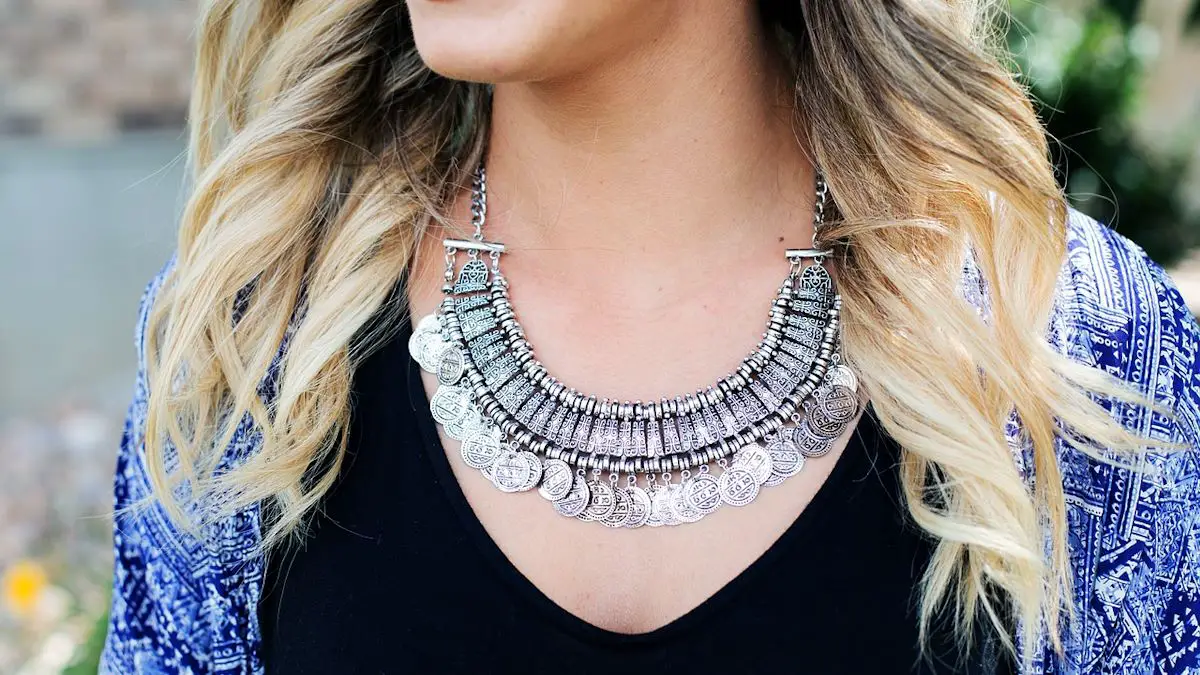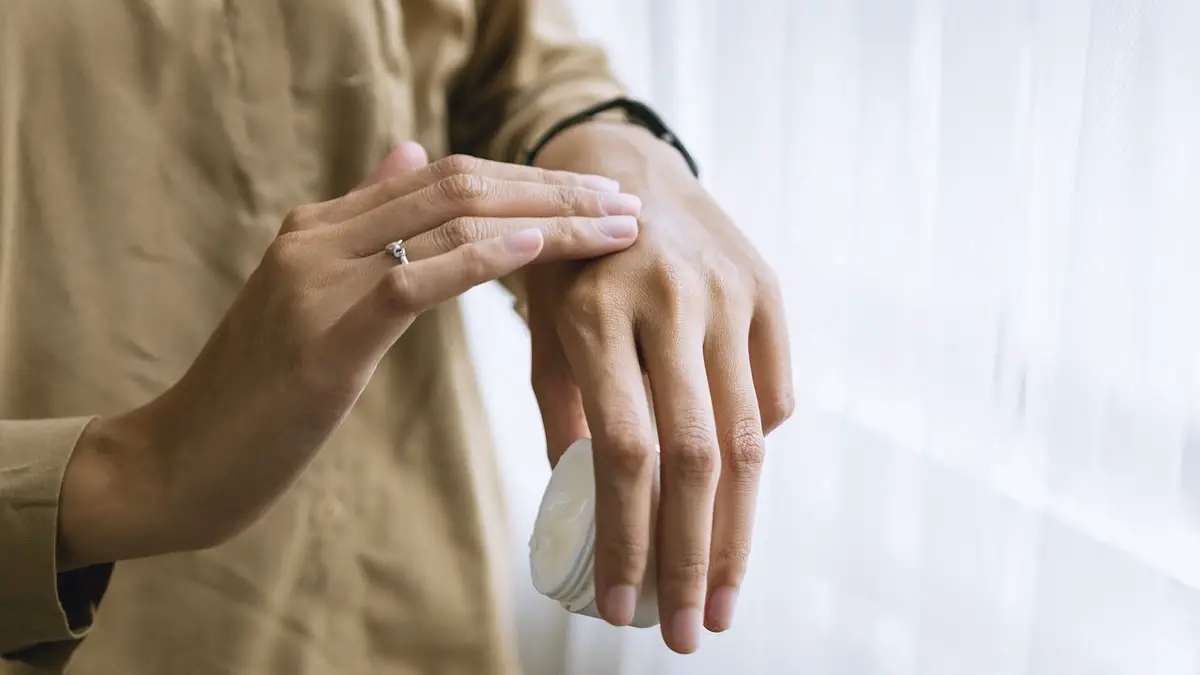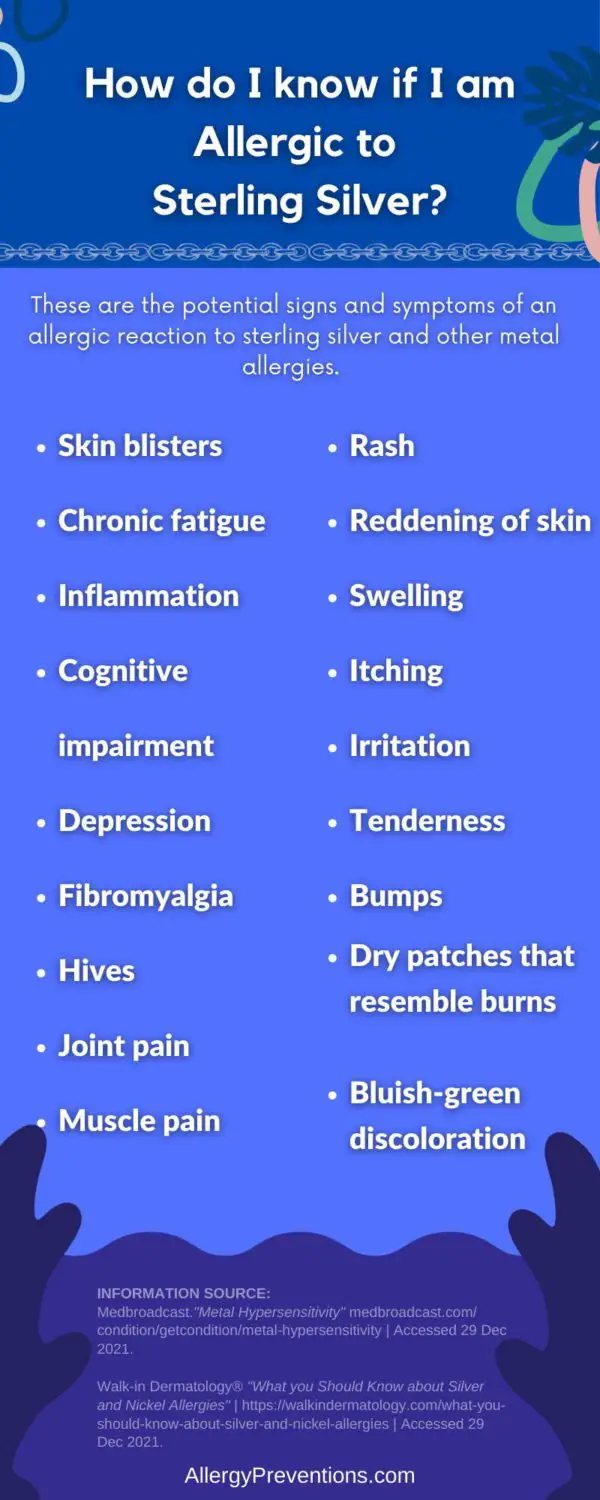Is sterling silver hypoallergenic? Yes, most sterling silver (.925) products are hypoallergenic. Wearing high-quality sterling silver jewelry should not cause an allergic reaction. On an important note, some sterling silver (usually cheaply made) is mixed with nickel instead of copper, which can cause an allergic reaction if you have a nickel allergy.

As an Amazon Affiliate, I may earn commissions from qualifying purchases.
Table of Contents
Is 925 Sterling Silver Hypoallergenic?

Yes, 925 sterling silver is considered hypoallergenic, but it depends on your specific allergies. The term “925” refers to the silver’s purity, indicating that it comprises 92.5% pure silver and 7.5% other metals, usually copper. Sterling silver may contain copper, zinc, or nickel as the other 7.5%. If you have an allergy to one of the added metals, your 925-sterling silver might not be hypoallergenic for you specifically.
This alloy composition is designed to enhance the durability and strength of the silver while minimizing the risk of allergic reactions.
However, it’s essential to note that some individuals may still experience allergies to sterling silver due to the presence of trace amounts of other metals, such as nickel, in the alloy. Nickel, in particular, is a common allergen for some people. If you have a known sensitivity to nickel or other metals, it’s advisable to exercise caution and consider alternative hypoallergenic metals like titanium or stainless steel.
What is Sterling Silver?
Sterling silver isn’t pure silver, it is a silver alloy that is created by mixing pure silver with another metal. The metals that are usually chosen to be mixed with silver are copper, nickel, and zinc.
Antique Silver Buyers informs us that copper is the most common metal to be mixed with silver, but zinc and nickel are often used as well. If your sterling silver is made with silver and copper (and you don’t have a silver or copper allergy) the sterling silver is hypoallergenic.
What is the Difference Between Sterling Silver and Silver?

Silver is “pure silver” or “fine silver” when its silver content is 99.9% or .999. Sterling silver has a silver content of .925 or 92.5%, and 7.5% of copper or other metals.
Pure silver is mostly reserved for making bars of silver, investing, trading, etc. On the other hand, sterling silver is used for making jewelry because it is much more durable with the addition of other metals mixed with silver.
Is Sterling Silver Nickel-Free?

Most quality sterling silver is nickel-free. With the keyword “quality” in mind, reputable jewelers are far more likely to sell you nickel-free sterling silver. Cheaply made sterling silver has a much higher chance of not being a nickel-free product.
Is Sterling Silver Safe?
Yes, from my research the medical community considers sterling silver as safe. A “Silver in health care” article, concludes that “…Silver exhibits low toxicity in the human body, and minimal risk is expected due to clinical exposure by inhalation, ingestion, dermal application or through the urological or hematogenous route.”
Can Sterling Silver Cause Irritation?

Yes, sterling silver can irritate the skin if you have an allergy to silver, copper, zinc, or nickel. To avoid irritation from sterling silver, consider wearing alternative metals or avoid cheaply made sterling silver. Poor-quality sterling silver has an increased risk of containing nickel.
To minimize the risk of irritation, those with known metal allergies or sensitivities should choose jewelry made from nickel-free sterling silver or explore alternative sterling silver hypoallergenic metals like titanium or stainless steel.
Proper care and maintenance of sterling silver jewelry can also contribute to reducing the likelihood of skin reactions. If irritation persists, it’s recommended to consult with a healthcare professional for guidance on managing and addressing allergic reactions.
How do I know if I am Allergic to Sterling Silver?
You may be allergic to sterling silver if you have signs of an allergic reaction when wearing sterling silver items. An Allergic reaction occurs after prolonged exposure, and only where the metal is in contact with your skin. You may also have systemic symptoms from an allergic reaction.
Signs of an Allergic Reaction
Although relatively uncommon, an allergic reaction to sterling silver can manifest through various signs and symptoms. If you suspect you may be experiencing an allergic reaction, watch out for the following signs:

- Bluish-green discoloration
- Bumps
- Chronic fatigue
- Cognitive impairment
- Depression
- Dry patches that resemble burns
- Eczema
- Fibromyalgia
- Skin blisters
- Hives
- Inflammation
- Irritation
- Itching
- Joint pain
- Muscle pain
- Rash
- Reddening of skin
- Swelling
- Tenderness
How to Minimize Sterling Silver Reactions
Minimizing sterling silver allergic reactions involves adopting certain practices and being mindful of the potential causes of irritation. Here are some tips to help reduce the likelihood of reactions:
- Choose Nickel-Free Sterling Silver:
- Opt for sterling silver jewelry that is explicitly labeled as nickel-free. Nickel is a common allergen, and selecting jewelry without this metal can lower the risk of reactions.
- Select High-Quality Jewelry:
- Invest in high-quality sterling silver jewelry from reputable sources. Well-made jewelry is less likely to irritate as it adheres to industry standards.
- Apply a Protective Coating:
- Consider applying a clear nail polish or jewelry sealant to create a protective barrier between the sterling silver and your skin. This can help reduce direct contact with allergenic components.
- Keep Jewelry Dry:
- Moisture can exacerbate skin reactions. Remove sterling silver jewelry before swimming, bathing, or engaging in activities that may lead to excessive sweating.
- Regular Cleaning:
- Clean your sterling silver jewelry regularly using a mild soap and water solution. This helps remove potential irritants and keeps the jewelry in good condition.
- Use Antiallergenic Products:
- Apply a thin layer of antiallergenic cream or petroleum jelly on the skin before wearing sterling silver jewelry. This can act as a barrier and reduce the risk of irritation.
- Limit Prolonged Wear:
- Avoid wearing sterling silver jewelry for extended periods, especially if you have sensitive skin. Take breaks to allow your skin to breathe and recover.
- Test Before Purchase:
- If you’re unsure about your sensitivity to sterling silver, wear the jewelry for a short period before making a full commitment. This can help you gauge your skin’s reaction.
- Consult a Dermatologist:
- If you have a history of metal allergies or persistent skin reactions, consult with a dermatologist. They can perform allergy testing and provide personalized advice based on your skin’s sensitivity.
- Consider Hypoallergenic Alternatives:
- Explore alternative metals like titanium or stainless steel, known for their hypoallergenic properties. These materials can offer stylish alternatives without the risk of allergic reactions.
By incorporating these practices, individuals can enjoy wearing sterling silver jewelry with a reduced risk of allergic reactions. If irritation persists, seeking guidance from a healthcare professional or dermatologist is advisable.
Looking for a more hypoallergenic metal? Check out these hypoallergenic metals, and kick your metal allergies to the curb.
